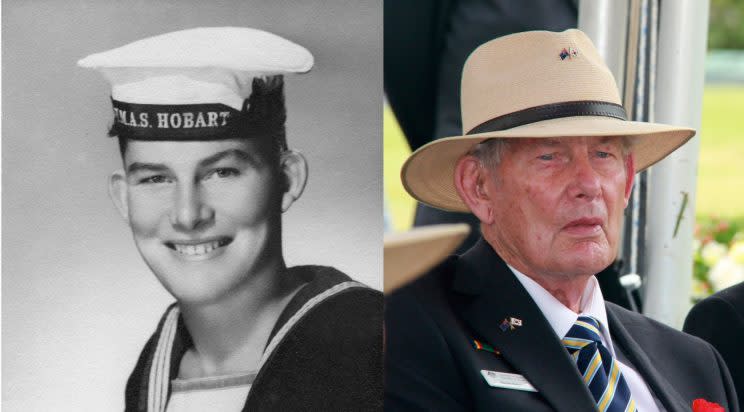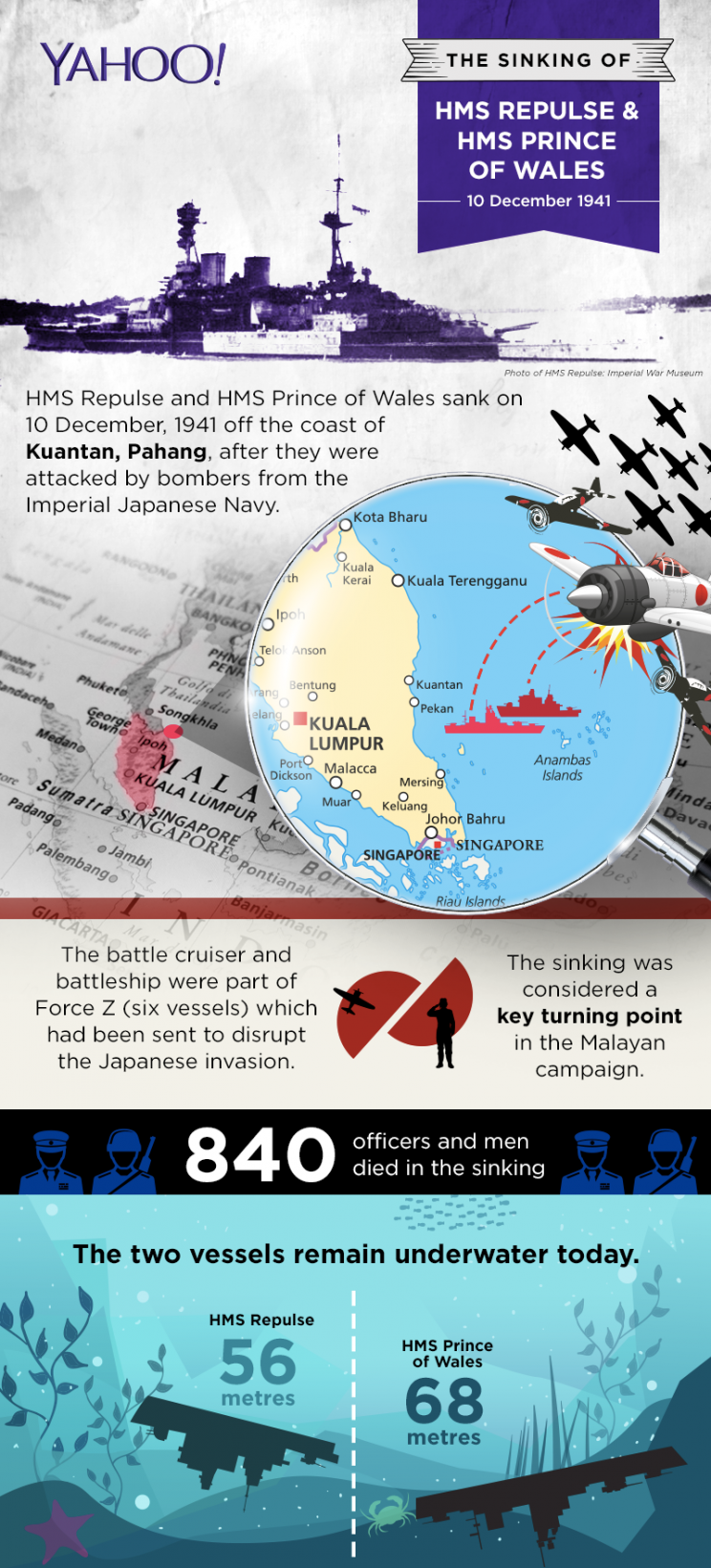Fall of Singapore was ‘great blow’: Australian WWII veterans

World War Two-era Singapore was seen as a bastion that would save Australia and other British colonies in the Pacific from invasion, but its rapid fall to Japan “absolutely horrified” Australian servicemen.
Derek Holyoake, 92, recalled the “utter chaos” at Keppel Harbour, where his ship HMAS Hobart was docked, days before the collapse. He was an 18-year-old seaman at the time.
“A lot of people were rushing down to the wharves in their cars, just abandoning cars, trying to get on ships to get away,” said Holyoake, who was speaking to Yahoo Singapore from Canberra.
“Some of the soldiers were busy pouring gallons and gallons of rum down the gutter, so that the Japanese wouldn’t get it. They’d already wrecked the floating dock (and were) just destroying anything of intrinsic value.”
Holyoake, who arrived in Singapore in December 1941, was also disgusted by the “apathy” of the British population in Singapore. “(They were) carrying on as if the war was a million miles away,” said Holyoake, whose ship had been tasked with escorting troop convoys from Colombo to Singapore.
“They were still partying on and carrying on as if the little yellow men (the Japanese) could be dispensed with by just a few troops. It was a pretty hard lesson for them to learn.”
Wednesday (15 February) marks the 75th anniversary of the fall of Singapore in World War II, where Australian servicemen played a key role. From December 1941 to February 1942, some 20,000 Australians served in the Malayan campaign and the Battle for Singapore.
One of them was retired Rear Admiral Guy Griffiths, 93, of the Royal Australian Navy, who was a midshipman serving on the battle cruiser HMS Repulse then. Unaware of the extent of the Japanese landings, he and his fellow sailors received the news of the fall of Singapore with shock.
“I think we were all absolutely horrified because it means that there was no resistance at all to the Japanese advance (to Australia),” said Griffiths, from Adelaide. He was just 17 at the time.
According to Australia’s Department of Veterans’ Affairs, 1,800 Australians were ultimately killed during the Malayan and Singapore campaigns, while more than 15,000 were taken prisoner by the Japanese.
A key turning point

Griffiths was part of a key battle on 10 December, 1941: the sinking of the battleships HMS Repulse and the HMS Prince of Wales by Japanese aircraft.
Professor Brian Farrell, a military historian with the National University of Singapore, wrote in “The Defence and Fall of Singapore” that the loss of the two ships was a catastrophe as it meant that the Japanese had “uncontested control of the South China Sea”.
Griffiths also told Yahoo Singapore, “In a way, you could say that the sinking of the two big ships in Force Z started the fall of Singapore.”
Repulse and Prince of Wales were part of Force Z, a naval force of six vessels sent by the British to act as a deterrent to the Japanese. Griffiths was among a crew of sailors in charge of controlling high angle anti-aircraft guns.
Japanese bombers, eventually numbering more than 80, began attacking the two ships at about 1140am off the coast Kuantan.
After dodging a number of torpedoes, Repulse was struck by five torpedoes and went down with about 500 officers and men. Griffiths, who was below decks when the order to abandon ship was given, got out through a porthole and slid down the ship’s side into the water. Repulse and Prince of Wales were sunk less than two hours after the Japanese attack began.
“I continuously say to myself: surviving the sinking of the Repulse was my first time that I ever won a lottery,” said Griffiths, who went on to serve in the liberation of the Philippines and the Korean War.
Today, the wrecks of the two ships remain in shallow waters off Kuantan. In recent years, reports have emerged of the two shipwrecks being plundered for scrap metal.
Asked what he makes of this, Griffiths said, “I don’t like it because any time somebody enters the ship, they are disturbing a grave. But of course they want to make money, so they cut off another piece of metal.”

Related stories:



